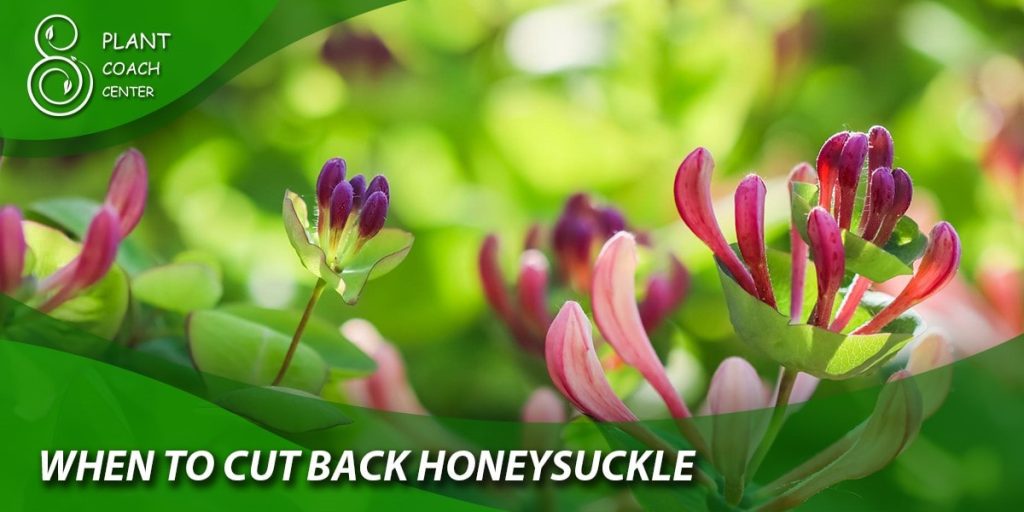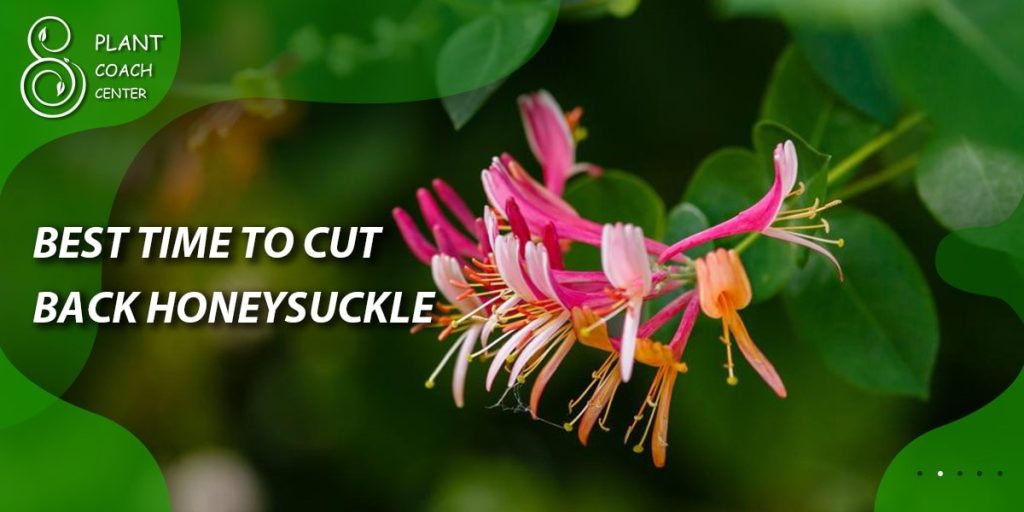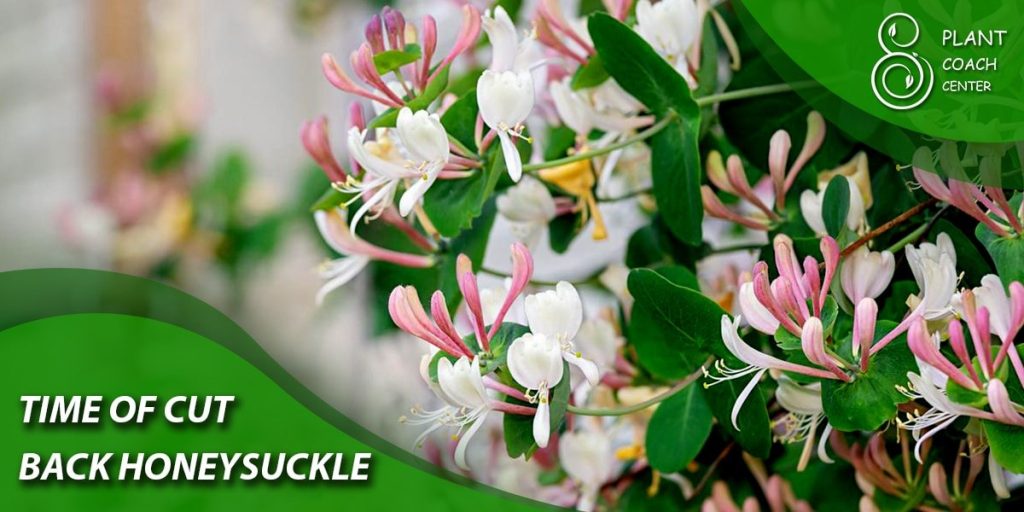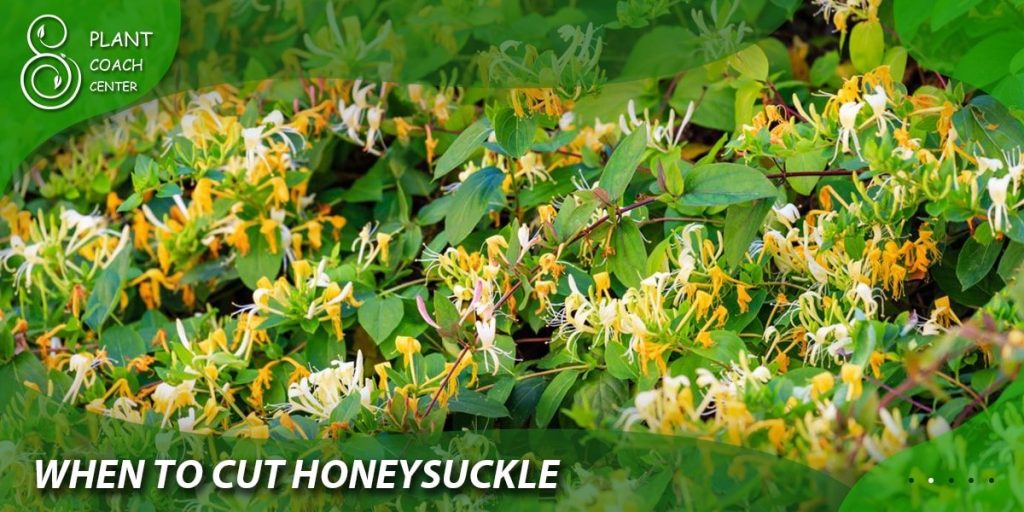When to Cut Back Honeysuckle
Honeysuckle is a delightful and versatile plant that can add beauty and fragrance to any garden or landscape. Known for its vibrant flowers and sweet scent, honeysuckle is a favorite among gardeners and nature enthusiasts. However, like any plant, honeysuckle requires proper maintenance and pruning to ensure its health and vitality.
Honeysuckle (Lonicera spp.) belongs to the Caprifoliaceae family and encompasses many species and cultivars. Native to various parts of the world, including North America, Europe, and Asia, honeysuckle is cherished for its ornamental value, wildlife attraction, and even medicinal properties. With its twining vines, fragrant blossoms, and occasional show of colorful berries, honeysuckle is a beloved addition to gardens, arbors, and trellises.
Understanding Honeysuckle Growth and Behavior
To effectively prune honeysuckle, it is essential to understand its growth habits and characteristics. Honeysuckle is a vigorous and fast-growing plant that can exhibit both climbing and shrub-like behavior, depending on the variety. Sunlight, soil conditions, and available support structures influence its growth pattern.
Honeysuckle vines have a twining habit, which allows them to climb and cling onto structures like trellises, fences, or other plants. This climbing ability makes honeysuckle an excellent choice for creating natural screens or providing vertical interest in the garden. However, some honeysuckle species, such as Japanese (Lonicera japonica), can become invasive in certain regions, crowding out native plants. It’s crucial to choose non-invasive varieties or monitor and control their growth if necessary.
Different types of honeysuckle exhibit various growth patterns and pruning requirements. Some common varieties include:

- Japanese honeysuckle (Lonicera japonica): This vigorous vine is known for its fragrant white or yellow flowers that age to a creamy color. Japanese honeysuckle can be invasive in certain regions and requires careful monitoring and pruning to keep it in check.
- Trumpet honeysuckle (Lonicera sempervirens): This native North American honeysuckle produces bright red, trumpet-shaped flowers that attract hummingbirds. It typically has a more restrained growth habit than Japanese honeysuckle, making it a popular choice for trellises and fences.
- Shrub honeysuckle (Lonicera tatarica): Unlike the climbing varieties, shrub honeysuckles grow in a bushy, upright form. They produce colorful flowers, such as pink, red, or white, and may even bear small berries. Pruning is generally minimal for shrub honeysuckles, mainly focusing on removing dead or damaged branches.
The Significance of Pruning Honeysuckle
Pruning plays a vital role in maintaining the health and appearance of honeysuckle plants. Proper pruning helps improve air circulation, control the plant’s size, and promote robust blooming and fruiting. It also allows for removing dead, diseased, or damaged branches, preventing the spread of pests and diseases.
Regular pruning encourages new growth and ensures a more compact and attractive plant. It can also prevent honeysuckle from becoming invasive or overwhelming other plants in the garden. By selectively removing certain branches, pruning helps shape the plant. It directs its growth, creating a more aesthetically pleasing and well-maintained appearance.
Additionally, pruning can rejuvenate older honeysuckle plants that may have become woody and less productive. Renewal pruning, which involves the removal of older, woody branches, stimulates the growth of new, vigorous shoots, resulting in improved blooming and overall plant vigor.
Identifying the Right Time to Prune Honeysuckle
Knowing when to prune honeysuckle is crucial for achieving optimal results. While honeysuckle can tolerate some pruning throughout the year, it’s best to follow general guidelines based on the plant’s growth stage and the specific variety.

1. Pruning in Spring
Spring is an ideal time for pruning most honeysuckle varieties, as it occurs before new growth emerges. During this time, you can remove any dead or damaged wood and shape the plant as desired. Pruning in early spring also helps stimulate robust blooming during the growing season.
Pruning in spring is particularly beneficial for Japanese honeysuckle, trumpet honeysuckle, and other climbing varieties. By pruning, you can shape the vine before active growth begins, control its size, and remove tangled or diseased branches.
For shrub honeysuckle varieties, light pruning in spring can help maintain their shape and remove any spent flowers or damaged wood. However, extensive pruning is generally unnecessary for shrub honeysuckles, as they have a naturally bushy growth habit.
2. Pruning in Summer
Summer pruning is typically limited to light maintenance and removal of any dead or diseased branches. Avoid heavy pruning during this time, as it can interfere with the plant’s ability to bloom.
During summer, focus on removing dead or damaged wood and maintaining the plant’s shape. Regular inspection will help identify any potential issues and address them promptly.
3. Pruning in Fall
Fall pruning is generally avoided for honeysuckle, as it can stimulate new growth susceptible to winter damage. However, minimal pruning can be done in late fall when the plant is dormant.
While fall pruning is not recommended as a routine practice, it can be employed to remove any dead or damaged wood and shape the plant before winter dormancy. Exercise caution and refrain from heavy pruning, as this can disrupt the plant’s natural hardening-off process.
Techniques and Tools for Pruning Honeysuckle
To successfully prune honeysuckle, it is essential to use the right techniques and tools. Here are some common pruning techniques employed for honeysuckle:
1. Thinning Cuts
Thinning cuts involve the removal of entire branches, typically starting from the plant’s base. This technique helps improve air circulation, reduce overcrowding, and encourage new growth.
When using thinning cuts, identify and remove branches crossing or rubbing against each other. Aim to maintain an open structure that allows light and air to penetrate the plant. This technique is particularly useful for climbing honeysuckle varieties to prevent overcrowding and maintain an aesthetically pleasing shape.
2. Heading Cuts
Heading cuts involve trimming the ends of branches to a specific length. This shapes the plant, controlsntrolling its sstimulatesimulating lateral Makeuts, and makes the cuts just above a bud or when performing heading cuts leaf node. This encourages the development of new branches and helps maintain the desired shape and size of the honeysuckle plant. Heading loyed to direct the growth of climbing honeysuckle vines or shape shrub honeysuckle varieties.
3. Renewal Pruning:
Renewal pruning involves the removal of older, woody branches to encourage the growth of new, vigorous shoots. This technique helps rejuvenate older honeysuckle plants and promotes better flowering.
To perform renewal pruning, identify the oldest and least productive branches and remove them completely. This stimulates the growth of fresh, healthy shoots from the base of the plant, resulting in increased blooming and overall vigor. Renewal pruning is especially beneficial for mature honeysuckle plants that have become woody and less over time.
When it comes t sure to use clean and sharp pruning shears or loppers to avoid damage
The plant. Disinfecting the tools between cuts is also recommended to prevent the spread of diseases.
Pruning Methods for Different Types of Honeysuckle

Different types of honeysuckle may require specific pruning methods. Here’s a breakdown of pruning techniques for various honeysuckle varieties:
1. Pruning Climbing Honeysuckle Varieties
Climbing honeysuckle varieties, such as honeysuckle and trumpet honeysuckle, require careful training and pruning. Train the vines to grow on trellises, fences, or other support structures. Prune these varieties after their blooming period, ving any dead or tangled vines and shaping them to maintain a neat appearance.
For climbing honeysuckle varieties, monitoring their growth and providing guidance on appropriate structures is crucial. As the vines grow, gently train them along the support, tying them with soft plant ties if needed. Regular pruning helps maintain the desired shape and prevents the vine from becoming too unruly.
Remove any dead, diseased, or damaged wood when pruning climbing honeysuckles. Thin out dense areas to improve air circulation, and prune to control the size and shape of the plant. Carefully shape the vines while retaining the overall natural form.
2. Pruning Shrub Honeysuckle Varieties
Shrub honeysuckle varieties, like the Tartarian (Lonicera tatarica) or winter honeysuckle, require minimal pruning. Light pruning immediately after blooming can help maintain their shape and remove any spent flowers.
When pruning shrub honeysuckles, the primary goal is to remove any dead or diseased wood and maintain its natural form. Avoid excessive pruning, as it may reduce the plant’s ability to produce berries or impact its overall health.
3. Pruning Vining Honeysuckle Varieties
Vining honeysuckle varieties, such as the trumpet honeysuckle (Lonicera sempervirens), benefit from regular pruning to control their growth and prevent them from becoming invasive. Prune these varieties in early spring, removing any dead or damaged wood and shaping the plant as desired.
Vining honeysuckles require regular monitoring and maintenance to prevent them from spreading uncontrollably. Cut back any unwanted or excessive growth, removing tangled or overcrowded vines. Maintain the desired shape and size by selectively pruning the plant. Always use appropriate supports to guide the vine’s growth and prevent it from overtaking other plants.
Common Problems and Challenges with Honeysuckle
While honeysuckle is generally a hardy plant, it can face certain problems and challenges. By understanding these issues, you can take appropriate measures to prevent or address them:
1. Pests and Diseases Affecting Honeysuckle
Honeysuckle can be susceptible to pests such as aphids, spider mites, scale insects, and whiteflies. These pests can cause leaf damage, stunt growth, and reduce overall plant health. Additionally, certain diseases like powdery mildew, leaf spot, and honeysuckle blight can affect the foliage and flowers.
To prevent and manage pests, regularly inspect your honeysuckle for signs of infestation, such as distorted leaves or sticky residue. Consider using organic pest control methods, like spraying with insecticidal soap or neem oil, to combat minor infestations. For severe pest problems, consult a local garden center or professional for appropriate treatment options.
Ensure proper plant spacing and good air circulation around your honeysuckle to prevent diseases. Avoid overhead watering, as it can promote the spread of fungal diseases. If diseases occur, promptly remove and destroy any infected plant parts to prevent further spread.
2. Identifying and Treating Common Issues
Regular observation is key to identifying and addressing common problems with honeysuckle. Monitor your honeysuckle’s leaves, stems, and flowers for signs of pests or diseases. If detected, take immediate action to prevent the problem from worsening.
For pests, try washing them off the plant with a strong stream of water or using insecticidal soaps. For diseases, remove and destroy affected plant parts to prevent the spread. Applying appropriate fungicides or contacting a plant disease specialist may be necessary for severe cases.
3. Pruning as a Preventive Measure
Pruning can be a preventive measure against certain problems. Promoting good air circulation and removing dead or diseased wood can minimize the risk of pests and diseases affecting your honeysuckle.
Regularly inspect your honeysuckle for any signs of pest or disease activity. Prune out any affected branches or leaves immediately to prevent further spread. Thinning cuts, in particular, can significantly improve air circulation, reducing the favorable conditions for pests and diseases to thrive.
Best Practices for Successful Honeysuckle Maintenance

To ensure the success of your honeysuckle plants, follow these best practices:
1. Soil Requirements and Optimal Growing Conditions
Honeysuckle thrives in well-drained soil that is rich in organic matter. Ensure the planting site receives adequate sunlight and has good air circulation. If your soil is heavy or clay-based, amend it with organic matter, such as compost or well-rotted manure, to improve drainage and fertility.
2. Watering and Fertilization Recommendations
Water your honeysuckle regularly, especially during dry spells, to keep the soil moist but not soggy. Apply water at the base of the plant to minimize the risk of foliar diseases. Avoid excessive watering, as it can lead to root rot.
Fertilize your honeysuckle in early spring with a balanced slow-release fertilizer to provide essential nutrients for healthy growth and blooming. Follow the manufacturer’s instructions regarding the appropriate dosage and application method.
3. Mulching and Weed Control Around Honeysuckle
Apply a layer of organic mulch around the base of the plant to conserve moisture, suppress weeds, and maintain an even soil temperature. Organic mulches, such as wood chips, straw, or shredded bark, also break down over time, enriching the soil with organic matter.
Regularly remove any weeds that compete with the honeysuckle for nutrients and water. Weeds can inhibit the growth of the honeysuckle and potentially harbor pests or diseases. Mulching around the plant helps reduce weed growth, but monitoring and removing any emerging weeds is still necessary.
Advanced Pruning Techniques for Honeysuckle Enthusiasts
For honeysuckle enthusiasts looking to explore more advanced techniques, consider the following:
1. Training Honeysuckle on Structures and Supports
Use trellises, fences, arbors, or other support structures to guide the growth of climbing honeysuckle varieties. As the vine grows, gently train it along the support, tying it loosely with soft plant ties if needed. This technique helps create a visually pleasing and well-organized display of honeysuckle blooms.
2. Espalier Techniques for Honeysuckle
Espalier is a pruning technique that involves training the plant to grow in a flat, two-dimensional pattern against a wall or support. While typically used for fruit trees, it can also be applied to honeysuckle for decorative purposes. Espaliered honeysuckle creates an eye-catching display and can be an excellent solution for limited garden space.
Carefully prune and train the branches along the support structure to espalier honeysuckle, securing them with plant ties or wires. Choose a design that.
Suits your preferences, such as a fan shape or cordon style. Regularly prune to maintain the desired shape and remove any unwanted growth.
3. Topiary and Artistic Pruning Approaches:
Honeysuckle can be pruned into various shapes and forms, adding a unique touch of artistry to your garden. Topiary techniques involve pruning and shaping the plant to create geometric or whimsical designs. Consider experimenting with spirals, animal shapes, or abstract forms to add visual interest to your honeysuckle.
For artistic pruning, let your creativity guide you. Prune the honeysuckle in a way that reflects your style and preferences. Take inspiration from natural forms, architectural designs, or your favorite artwork. Regular maintenance and shaping are necessary to maintain the desired artistic effects.
Conclusion
Pruning honeysuckle is a crucial aspect of its care and maintenance. You can enjoy a healthy and vibrant honeysuckle plant in your garden by understanding the growth patterns, following the right timing, and employing proper pruning techniques. Remember to assess the specific needs of your honeysuckle variety and adapt your pruning practices accordingly. With regular attention and care, your honeysuckle will reward you with its charming blooms and delightful fragrance for years.
When is the best time to prune honeysuckle?
Spring, after blooming.
Can I prune honeysuckle in winter?
Generally, it's best to avoid pruning in winter.
Will pruning honeysuckle promote more blooms?
Yes, proper pruning can encourage robust blooming.







